Search Results for 'Dick Byrne'
20 results found.
Major Irish authors to take part in Kenny’s birthday celebrations
Jennifer Johnston, Eugene McCabe, Theo Dorgan, and Dermot Healy, will be among the 70 major Irish writers coming to Kenny’s to help the bookshop celebrate 70 years in business.
Taibhdhearc na Gaillimhe
On the 1820 map of Galway, the site of the Taibhdhearc was part of the then Augustinian Church. When the present church was built in the 1850s the site became derelict. The late Ned Joyce remembered a large tree growing on the site, a tree which stretched across the street to a tenement known as ‘The Windings’. The occupants used to hang their washing on the tree on fine days.
The Castle Hotel
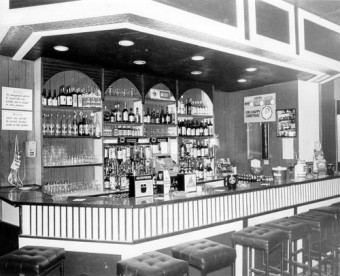
“An important addition to the accommodation for visitors in Galway is provided by the Castle Hotel. This hotel is conveniently situated in Lower Abbeygate Street, opposite the Pro-Cathedral. The proprietors claim that it is not only the newest of Galway’s hotels, but it is also the most comfortable and central tourist, family, and commercial hotel in the city, and with this contention, many who stayed there would fully agree. The Castle Hotel is within a few minutes walk from the railway station and docks. It is fully licensed. Parties are catered for.”
Those who sing pray twice
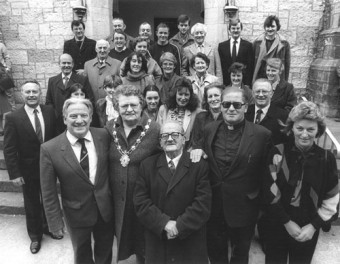
A friend once told me that the quality of choral singing in her local church was such that even the most familiar hymns sounded unfamiliar. For those who frequent the Augustinian church on Sunday mornings, the reverse is true as each Sunday is made special by the wonderful four-part harmonies and beautiful singing of the choir there. A century ago they were referred to in the local press as ‘magnificent’ and even then were singing works by Haydn, Mendelsshon, and Weber.
Today’s the day for panto auditions
Auditions for Taibhdhearc na Gaillimhe’s pantomine event of the year, Yummy Mummy will take place tomorrow and Wednesday in An Taibhdhearc.
Dick Byrne - The man who brought light to Mayo
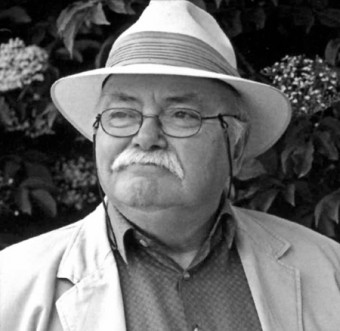
Terrible punishments awaited young transgressors in the Ireland of the 1950s. If a boy mitched from school he could end up in Letterfrack, the notorious so called industrial school, run by the Christian Brothers. It was a type of borstal, where, for almost a century, troubled boys were brutally chastened and subdued. Its grim, grey buildings still stand today, and if you pass them on a wet Connemara day, you wonder about the boys who were sent there from cities and towns around Ireland. Despite its change of usage to one of the foremost craft training centres in the country, it still looks a sad place to me. But back in the 50s and 60s its name struck terror in the hearts of most boys and youths. I remember seeing a boy handcuffed to a policeman sitting on the Dublin train. Word was whispered around the carriage that the boy was from Letterfrack. We all stared at him as if the poor fellow was an alien.
Dick Byrne to launch auto-biography in Kenny’s
Galway architect, playwright, journalist, and ‘man about town’ Dick Byrne will launch his autobiography - Tell ‘Em Who You Are! - in Kenny’s Bookshop, Liosbán, tomorrow at 6pm.
Egyptian family fun in Tóraíocht an Yummy Mummy
DR STANLEY and his friend Ollie are on the cusp of discovering the lost tomb of Hatchetsoup, but an evil priest, a man eater, and a pharaoh’s curse stand in their way. What will they do? What will happen?
Seoda...Seoda...Seoda
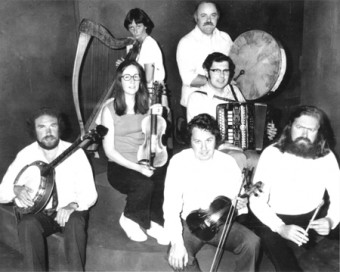
In 1951 Comhaltas Ceoltóiri Éireann was set up to promote traditional Irish music. The first Galway branch was formed about 1965 and initially they held a committee meeting every week. Then somebody suggested they have a session every week instead, and this they did, in Martin Forde’s Eagle Bar in William Street West. Mind you, the session could not start until Mrs Forde had finished watching The Fugitive on television. These sessions became hugely popular at a time when very few pubs in Galway allowed live traditional music.
The Claddagh market
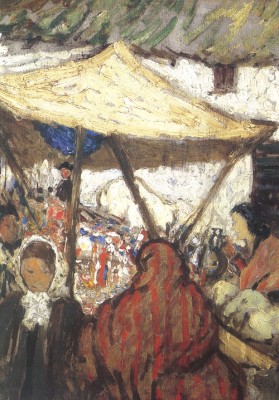
Grace Henry was born in Aberdeen in 1868. She studied art in Paris where she worked with Andre Lhote. It was there she met the Irish artist Paul Henry, and they married in 1903. They returned to Ireland to paint. In 1912 they went on holiday to Achill Island, and ended up staying there for eight years. They both painted a lot on the island, but also in other areas in the west. Her work was very influenced by Paul in those years. Eventually they moved back to Dublin and, in the late 1920s, they separated. They continued to paint and each developed a major artistic reputation. Grace died in 1953.

